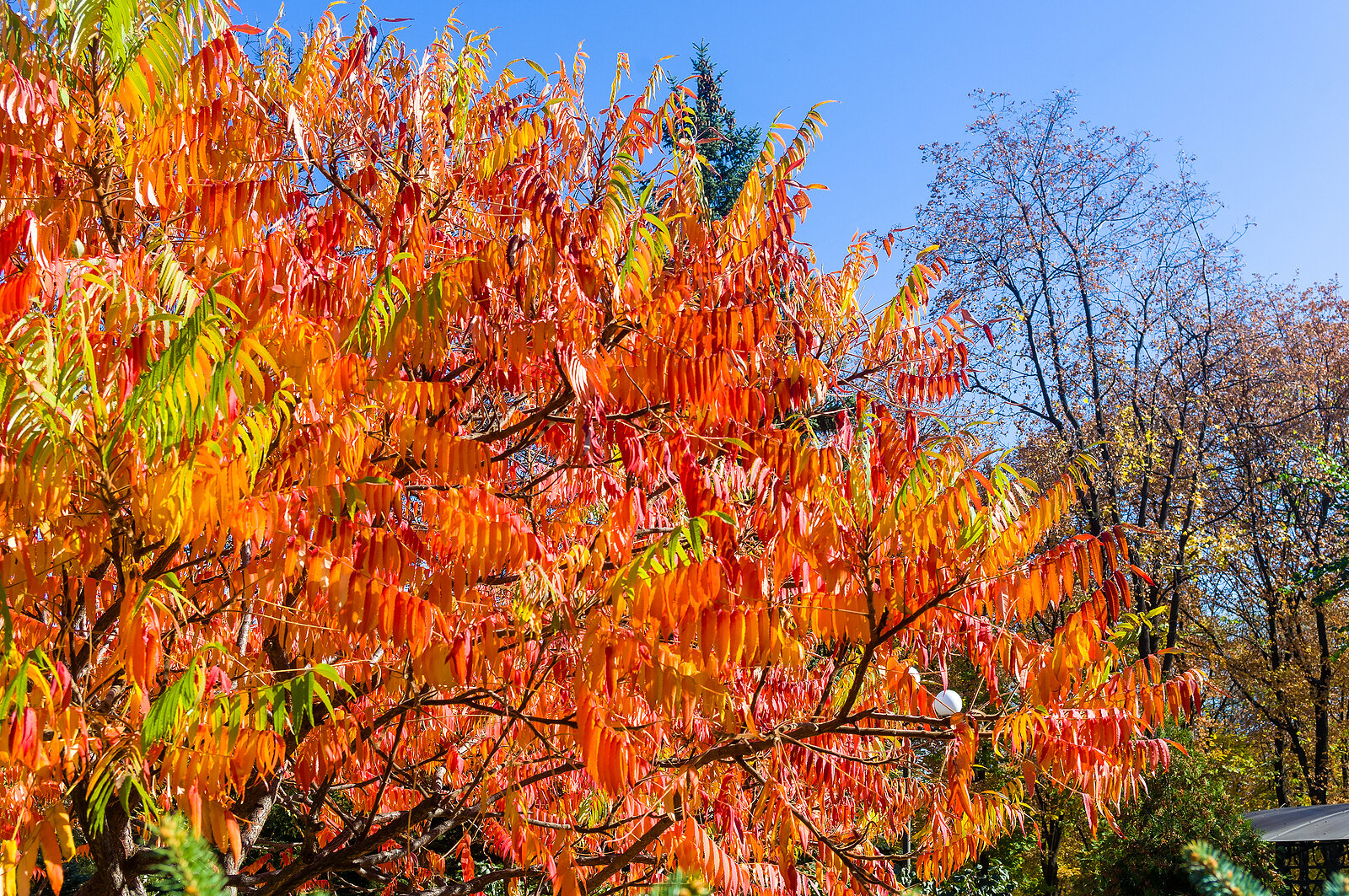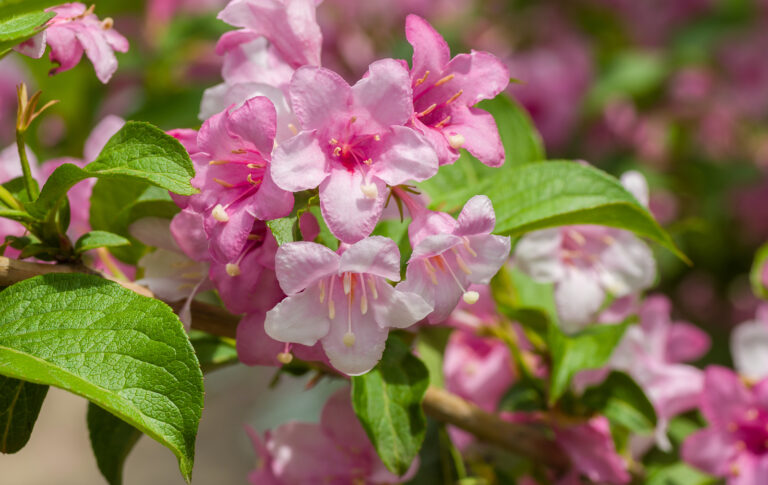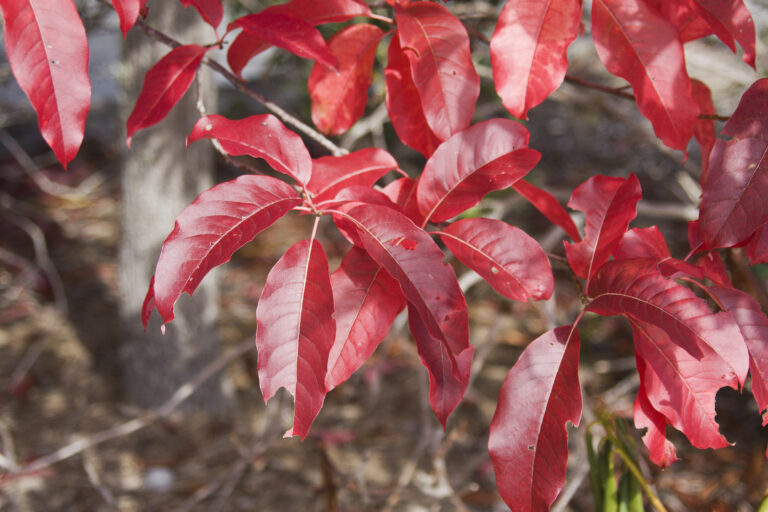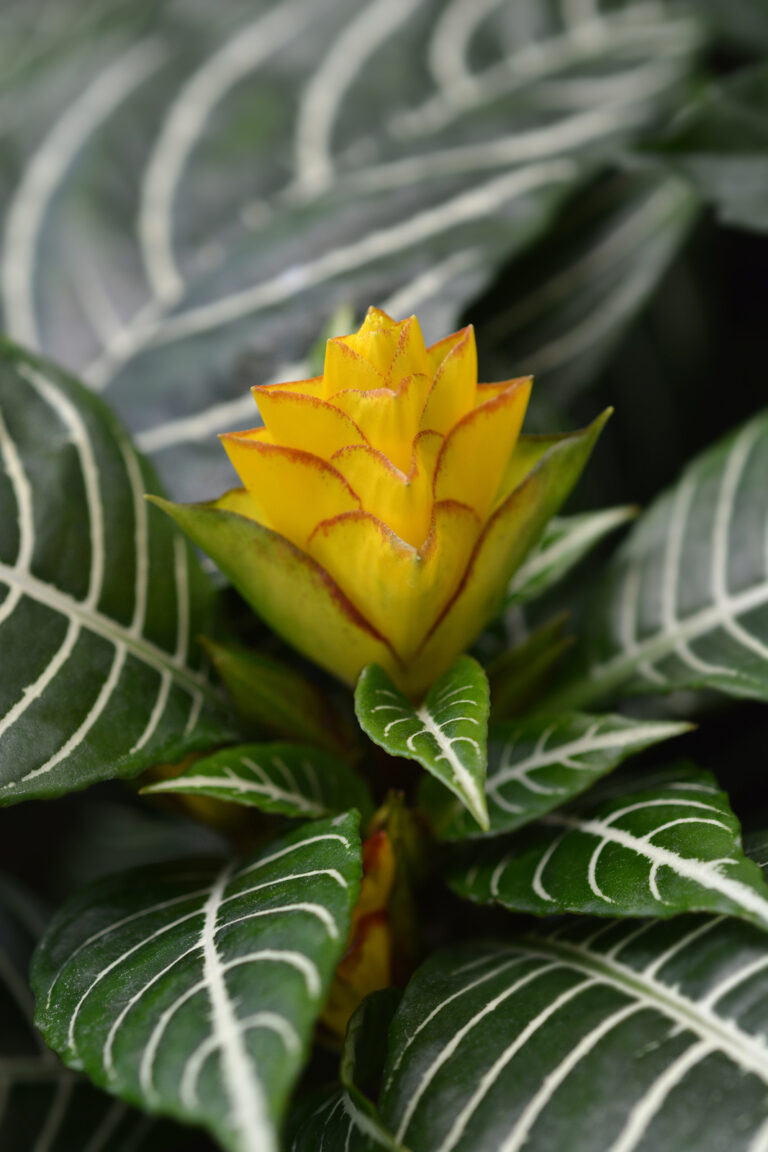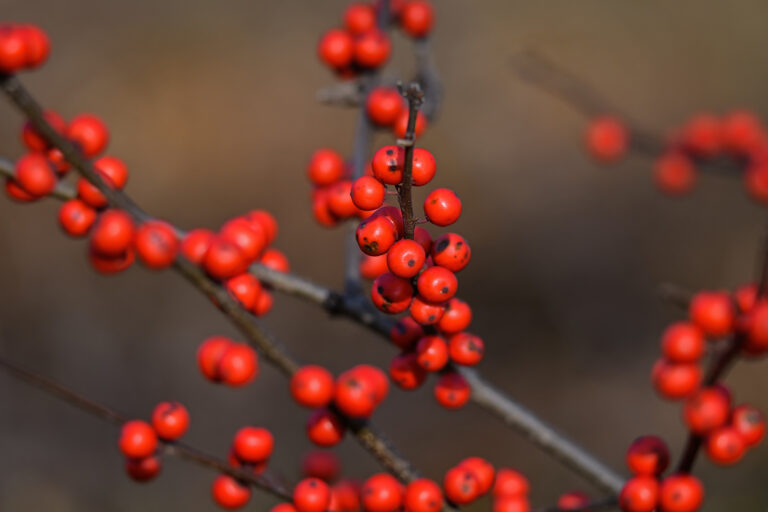How to Grow Sumac – Rhus
Rhus — commonly called Sumac–are evergreen and deciduous shrubs and trees notable for their brilliant fall leaf color and showy clusters of red berries that persist into winter.
Many Rhus species and cultivars turn brilliant shades of yellow, red, or orange in autumn. Inconspicuous flowers appear in summer; they are followed by spherical, usually red berries.
Rhus can be grown in shrub borders, woodland gardens, or as specimens plants.
Rhus is a genus of 200 species. Rhus species are widely distributed in temperate and subtropical regions in North America, South Africa, East Asia, and Northeastern Australia.
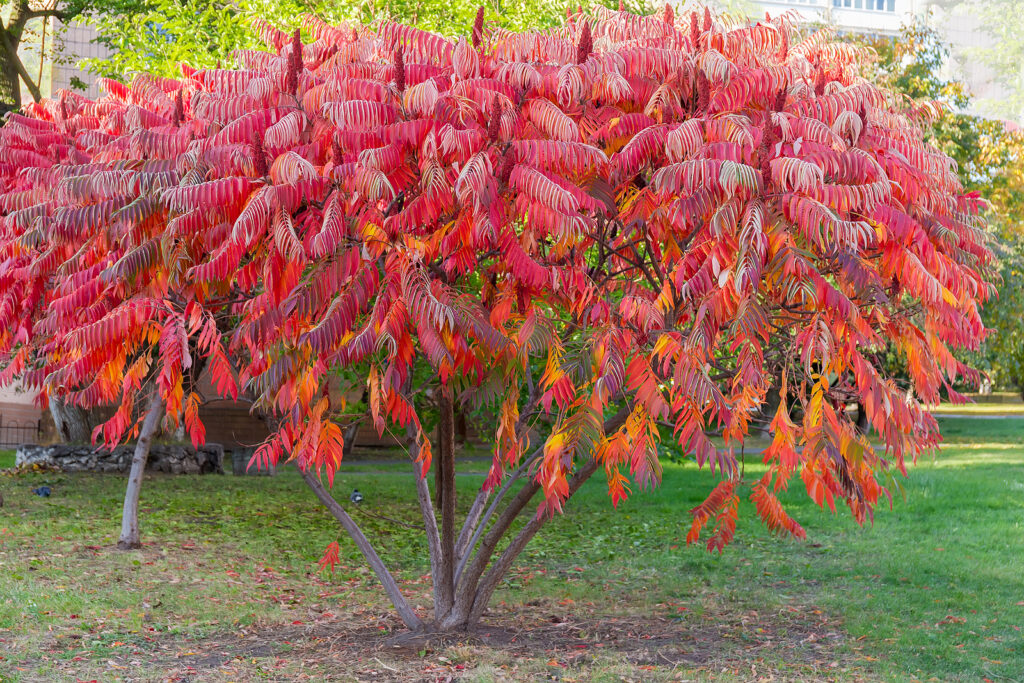
Get to know Rhus
- Plant type: Evergreen or deciduous shrubs or trees
- Growing zones and range: Varies, Zones 2 to 8 depending on the variety
- Hardiness: Most varieties can withstand cold winters
- Height and width: Shrub species grow 3 to 5 feet (1-1.5m) tall and wide; tree varieties can grow from 10 to 30 feet (10m) tall and wide.
- Growth rate: Moderate
- Form and habit: Large, moundlike bushes
- Foliage: Branches are brilliant with orange or deep red leaves
- Flowers: Flowers are usually barely noticeable because the greenish color blends in with foliage; plants sometimes have both male and female flowers, but usually they are either or
- Flowering time: Summer
- Fruits: Spirelike clusters of fuzzy red fruit adorn the ends of branches; both sexes of flowers are necessary for fruit production, but only the female plants bear berries
- Uses: Naturalizing, ground cover, shrub borders, or in semiwild settings
- Garden companions:
- Common name: Sumac
- Botanical name: Rhus
- Family name: Anacardiaceae
- Origin: United States, Canada, East Asia, South Africa, and parts of Australia
Where to plant Rhus
- Plant Rhus in full sun.
- Plant Rhus in well-drained, dry soil; soggy soils can kill Rhus.
When to plant Rhus
- Plant container-grown Rhus in spring or autumn.

Planting and spacing Rhus
- Rhus root cuttings can be planted in fall or spring.
- Space Rhus 8 to 20 feet (2.5-6m) apart depending on the variety.
How to water and feed Rhus
- Give Rhus regular to little water.
- Feed Rhus with an all-purpose organic fertilizer in spring, though they grow strong with low-fertilizer.
How to care for Rhus
- To encourage Rhus development of more stems, cut a few of the oldest stems down to ground level in early spring each year.
- Rhus can be pruned hard in spring.
Rhus pests and diseases
- Rhus is susceptible to powdery mildew , Verticillium wilt, wood rot, leaf spot, blister, canker, and dieback.
- Rhus can be attacked by caterpillars and scale insects.
Rhus propagation
- Rhus can be propagated in a number of ways: by digging up and replanting the underground branches known as suckers, by forcing a branch to grow roots by the method known as ground layering, from softwood cuttings of new growth taken in late spring or early summer, from semihardwood cuttings of more mature growth in mid- or late summer, and from hardwood cuttings of dormant leafless growth in late fall or winter.
Rhus varieties to grow
- Rhus aromatica (also called R. canadensis), Fragrant sumac, has three-leaflet aromatic leaves, each leaflet being 1.5-3 inches (3.8-7.6cm) long. This species grows 2-6 feet (.6-1.8m) tall and bears clusters of red berries in late summer. It makes an easily maintained ground cover for large areas. Zones 3 to 9.
- R. chinensis, Chinese sumac, at 20 feet (6.1m) or taller and suckering aggressively, this deciduous shrub may be too large for most gardens. Valuable in open natural sites for its late-summer cream-colored flower panicles, which average 8 inches (20.3cm) long and wide, often much larger, especially in the cultivar ‘September Beauty’. These are followed by orange-red fruits and golden orange foliage. Zones 5 to 7.
- R. copallina, Shining sumac, has 4-6 inch (10.2-15.2cm) spikes of bright red berries that cling through the fall and winter. The featherlike leaves have 9 to 21 leaflets, each 2-3 inches (5.1-7.6cm) long with unique midribs webbed like a duck’s foot. This species usually grows 3-6 feet (.9-1.8m) tall. Zones 3 to 8.
- R. ǵlabra, Smooth sumac, deciduous shrub or small tree, and bears bright red berries in fall and winter. Native to much of North America. It grows 6-15 feet (1.8-4.6m) tall, sometimes treelike to 20 feet (6.1m). In the wild, spreads by underground roots to form large patches. Looks much like R. typhina, but usually grows lower and does not have velvety branches. The 12-18 inch (30.5-45.7cm) featherlike leaves are composed of many 2-4 inch (5.1-10.2cm) toothed leaflets, deep green above and whitish beneath; turn scarlet in fall. Inconspicuous flowers are followed by showy, erect clusters of scarlet fruit that remain on bare branches from fall well into winter. Garden use same as for R. typhina. Zones 2 to 8.
- R. ǵlabra laciniata, a variety of smooth sumac, a cut-leaved that has very deeply lobed leaves.
- R. lancea, African sumac, evergreen tree. Hardy to 12°F/-11°C. Slow growing to 25 feet (7.6m). Open, spreading habit; graceful weeping outer branchlets. Train to single trunk or let grow as multitrunked tree somewhat resembling olive. Dark green leaves are divided into three willowlike, 4-5 inch (10.2-12.7cm) long leaflets. Clusters of pea-size, berrylike, yellow or red fruit can be messy on pavement. Tolerates high heat. Can be clipped into hedge. Susceptible to Texas root rot.
- R. ovata, Sugar bush, evergreen shrub. Native to dry slopes in California, Arizona. To 2.5-10 feet (.8-3.1m) tall, upright or spreading. Glossy, leathery leaves, 1.5-3 inches (3.8-7.6cm) long, somewhat trough shaped and pointed at tips. Dense clusters of white or pinkish spring flowers are followed by small, reddish, hairy fruit coated with sugary secretion. Same landscape uses as R. integrifolia, but for inland areas rather than sea coast.
- R. trilobata, Squawbush skunkbush, deciduous shrub. Native from Illinois westward to Washington, California, Texas. Similar in most details to R. aromatica, but scent of bruised leaves is considered unpleasant by most people. Clumping habit makes it a natural low hedge. Brilliant yellow to red fall color.
- R. typhina, Staghorn sumac, so called because its branches are covered with a fuzz similar to that on young deer’s antlers, grows unusually large; it becomes 10-30 feet (3.1-9.1m) tall and looks best at the back of a border or in a semiwild setting. This species has feather-shaped leaves 12-24 inches (30.5-70cm) long composed of 13 or more 2-4 inch (5.1-10.2cm) leaflets. It bears 4-8 inch (10.2-20.3cm) spikes of fruit in fall and winter. Zones 3 to 8.
- R. typhina dissecta, the shred-leaved staghorn sumac, has leaves that are deeply lobed.
- R. typhina laciniata, the cut-leaved staghorn sumac, has leaves that are deeply lobed.

